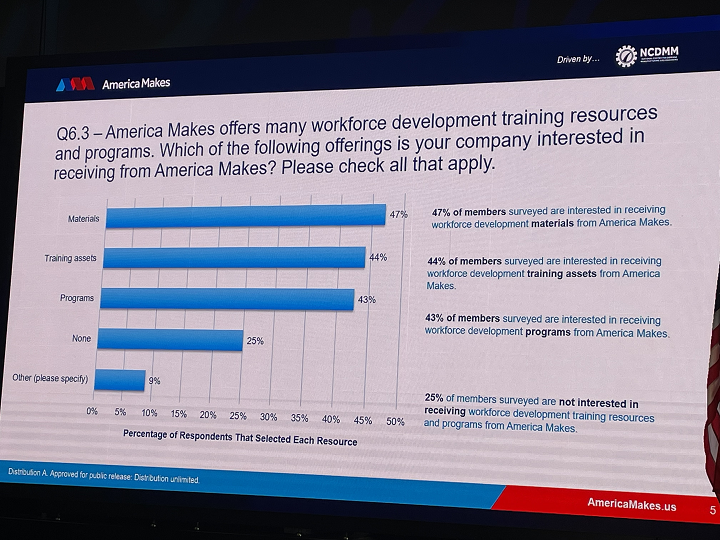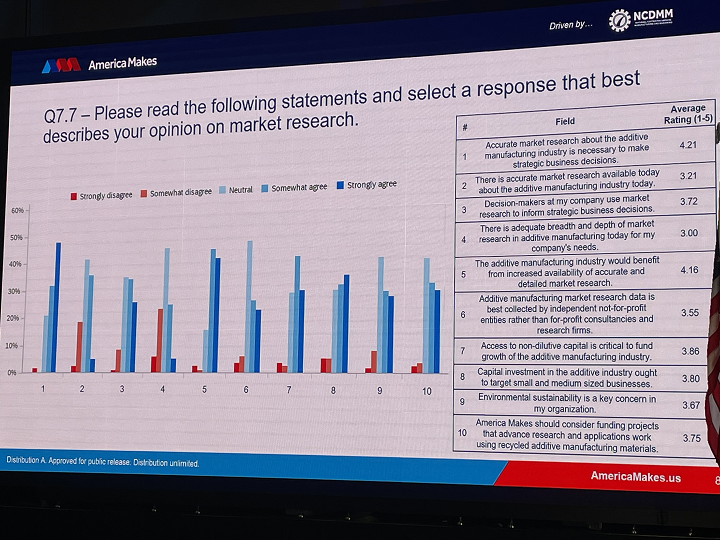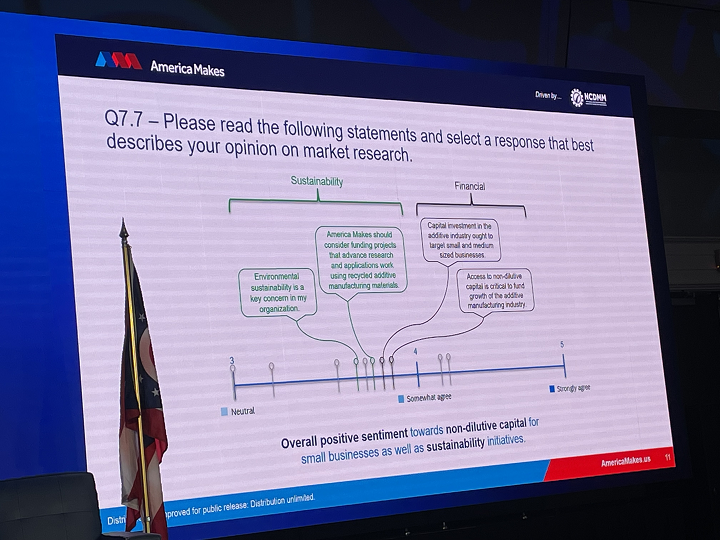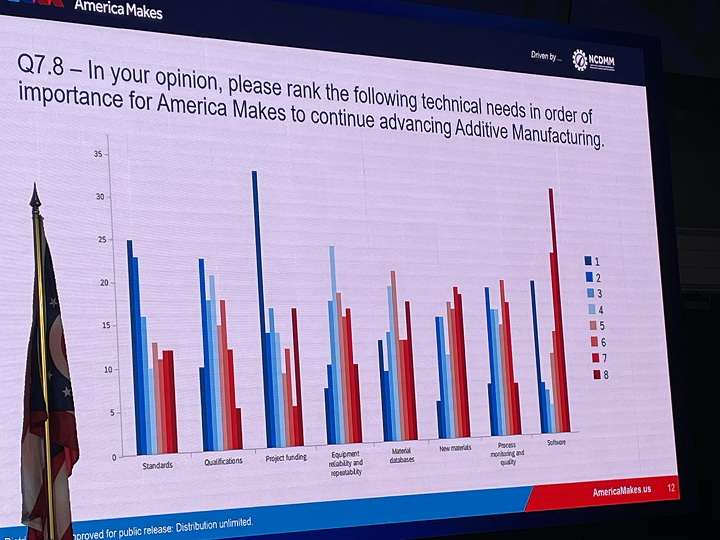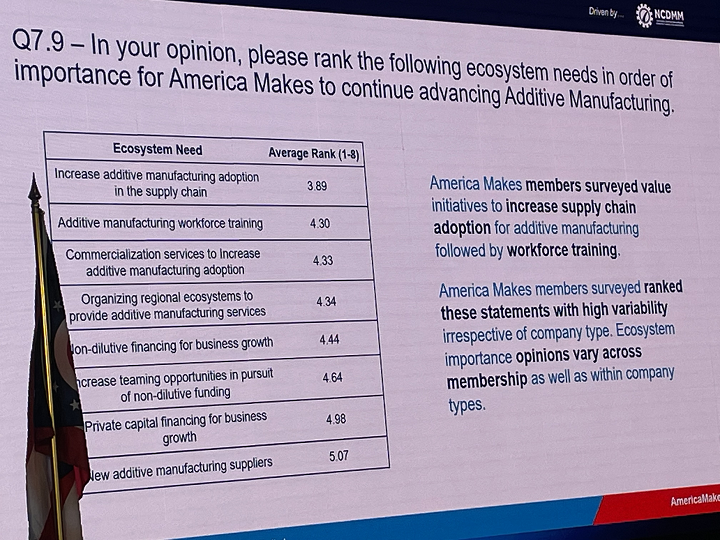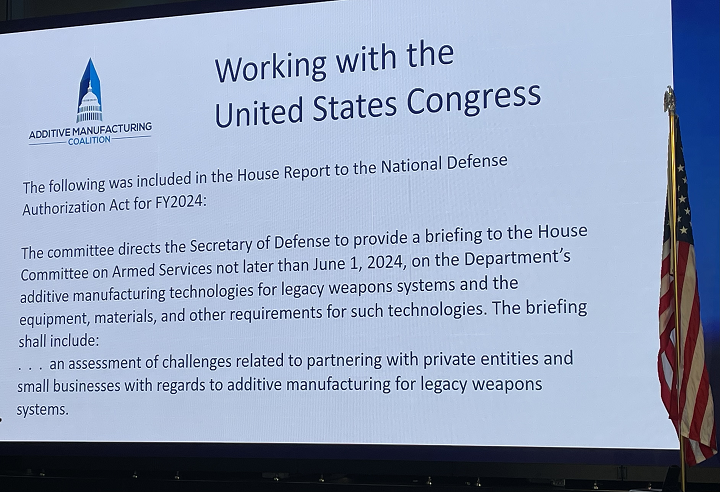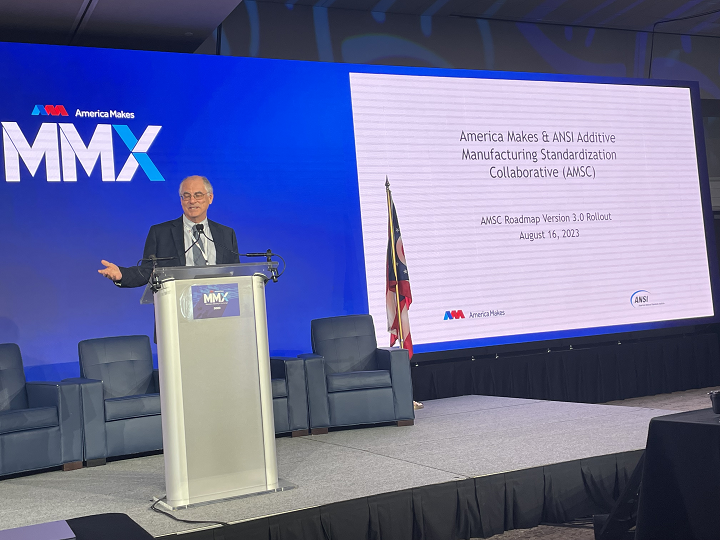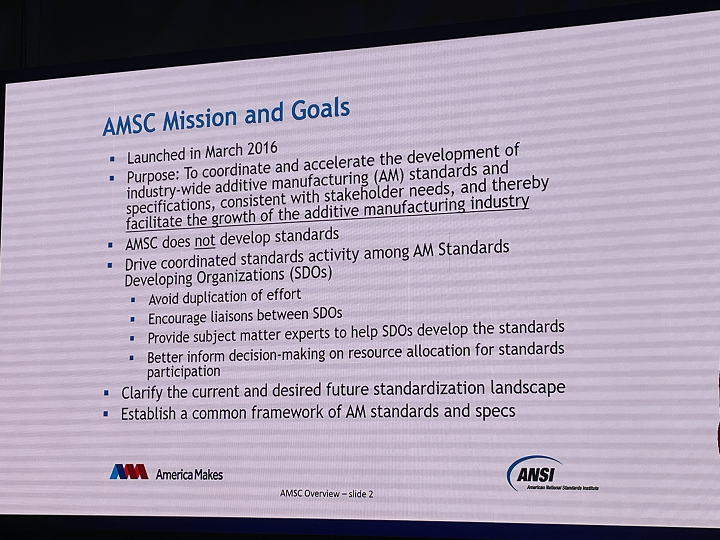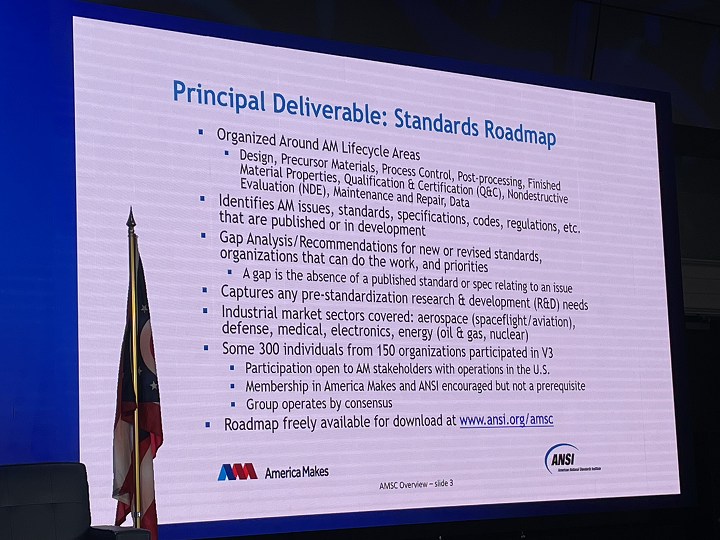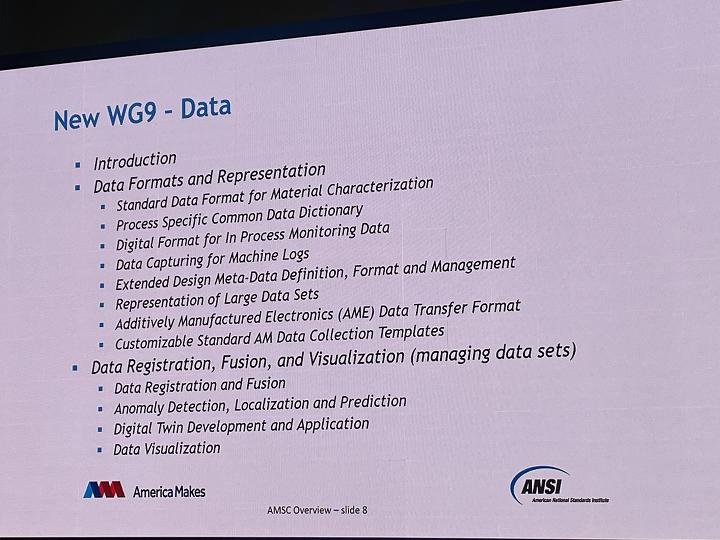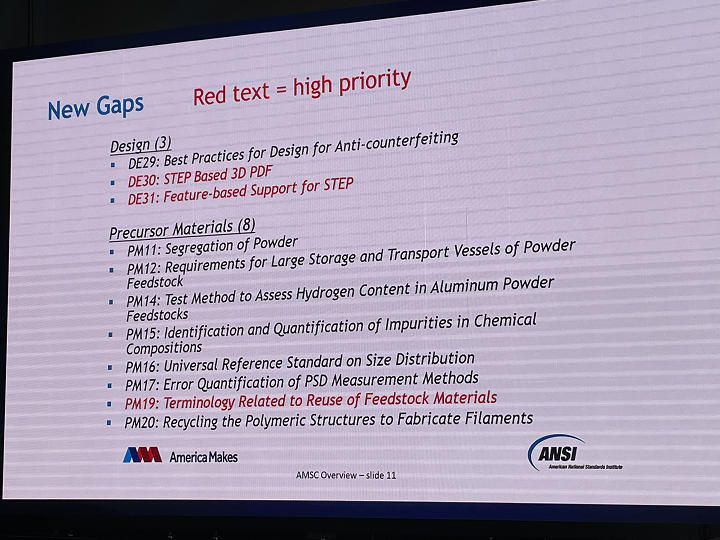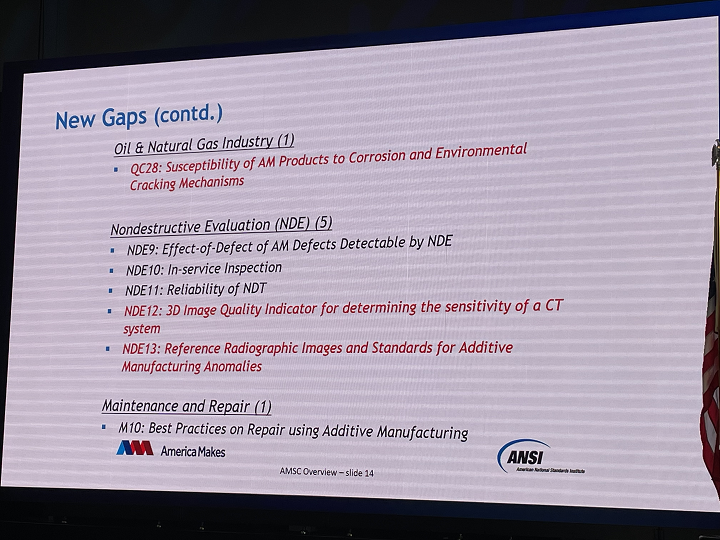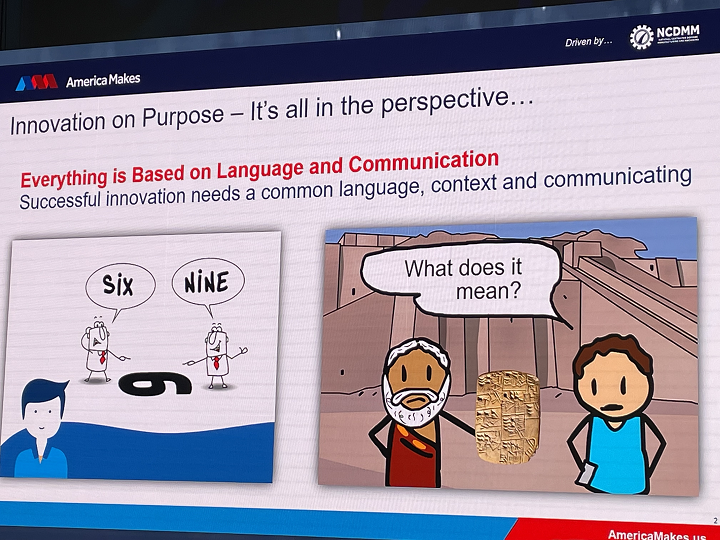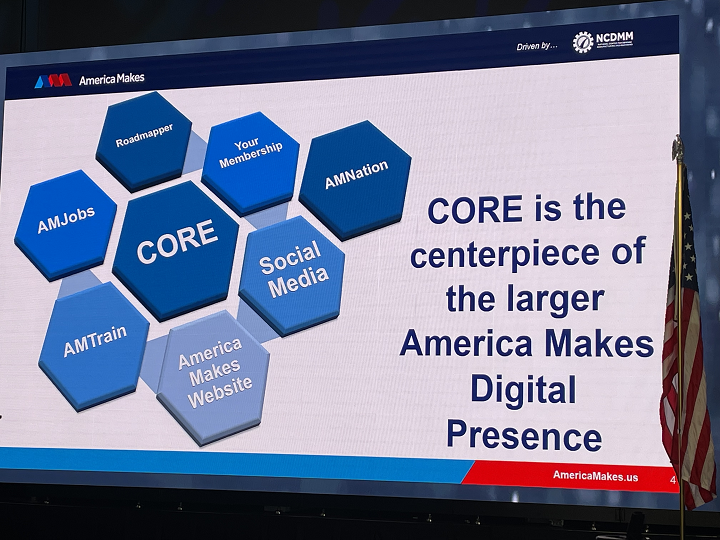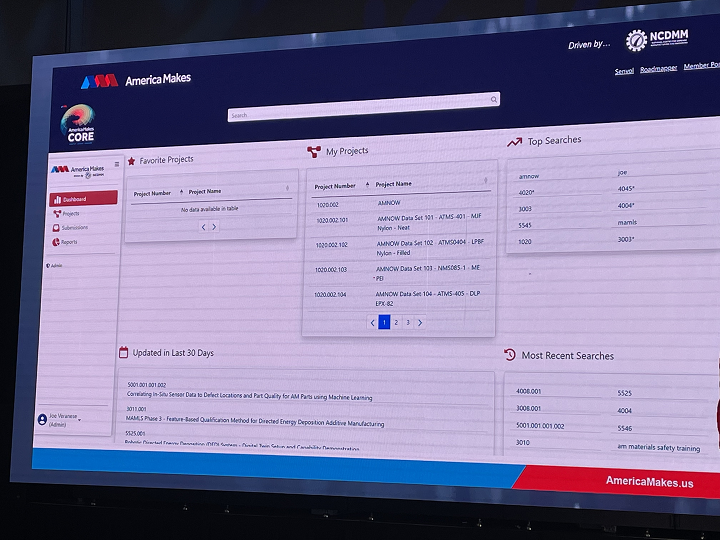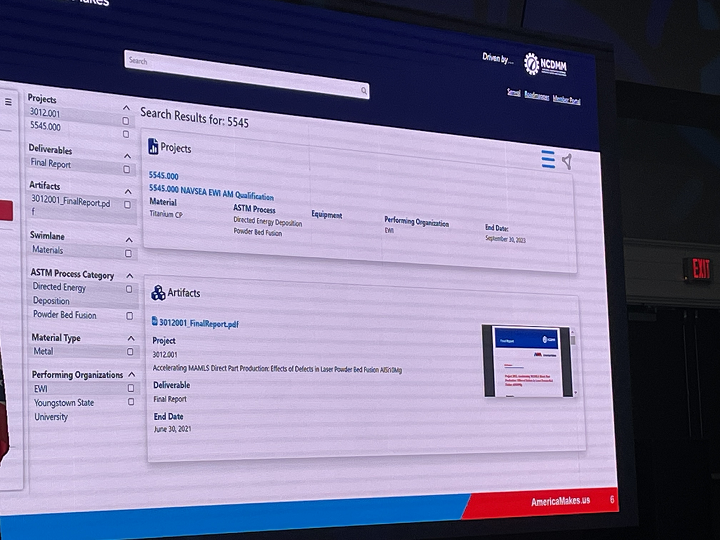In our previous article, we discussed updates to America Makes, including to its executive committee, as well as the state of the organization. The flagship additive manufacturing (AM) institution also addressed the ways that its programs were growing with the larger 3D printing industry at its recent Members Meeting & Exchange (MMX) in Youngstown, Ohio.
Ecosystem Expansion: Addressing Adoption of AM Across the USA
Kimberly Gibson, America Makes Ecosystem Director, broke down the results of the annual Membership Survey, explaining that it’s important we understand what was shared with the organization through the survey.
For the most part, participants agree that America Makes works hard to keep members connected and promote member activities, such as in-person and virtual networking, project participation opportunities, participation in Advisory and Working Groups and other facilitated discussions that develop industry knowledge, and more.
In terms of workforce development, 69% of survey participants want to learn more about future education and workforce development (EWD) opportunities, which makes sense, considering only 20% are currently engaged in any EWD initiatives. 50% are interested in posting job openings through the EWD platform, 39% find it hard to fill job openings in the AM industry, and 39% have job openings for AM in their companies.
“Generally you like our training assets and resources, so that’s good,” Gibson said. “Some feedback we received from platinum members is the desire for custom-developed training assets and mentorship opportunities, so we could look into that in the future.”
The survey asked what kind of market research is interesting to members, and 59% of those surveyed are interested in knowing the projected growth rate for AM, while 54% think total sales by revenue by materials and hardware is important.
“Most of you are looking to the future, because 70% want to identify the industries most likely to adopt or increase adoption of AM,” Gibson said. “This was a really important finding.”
Members surveyed had a positive response when it came to funding projects that advance sustainability, and many want to hear more about capital investments taking place in the AM industry.
When it came to ranking the technical needs necessary to continue advancing AM technology, priority was generally given to standards and project funding. But, when the results were broken down by the hardware category, it was discovered that hardware companies ranked process monitoring and quality high, and software low, on the scale of importance. Software companies ranked standards and project funding high, while service providers ranked equipment repeatability and reliability high; both of these categories ranked material databases low.
When the results were filtered for end use companies, they ranked qualifications and standards high, but new materials and equipment reliability/repeatability low. Finally, academia and research companies typically ranked standards and project funding high, with software ranked low.
The survey also asked respondents to rank the importance of various ecosystem needs to continue advancing AM, and many value initiatives to increase supply chain adoption for AM, as well as workforce training.
“Our membership is diversifying, and 11 years in, you’d certainly expect that, right? So what else do we need to think about in the future?” Gibson asked. “Survey results varied so much across membership, and that’s why we think partnerships are so important.”
She brought up the organization’s partnership with the Additive Manufacturing Coalition, which was actually announced at MMX 2022 and “resulted in several educational forums” about the value of AM. The focus was sharing with decision-makers in Washington D.C. “what’s happening in additive in a consumable way, a little more policy-oriented and less technical.” The first Fly-In this spring was a major win, as the language below was included in the U.S. Congress report to the National Defense Authorization Act.
The dates for the next Fly-In are April 9-11, 2024.
AMSC Roadmap Version 3.0 Rollout
At MMX, everyone who walks up to the stage is accompanied by great music, chosen by the presenters themselves. Jim McCabe, Senior Director of Standards Facilitation for ANSI, said this was the first time in his career he was asked to pick a walk-up song, and selected an especially fitting one: as he’s retiring soon, he chose “Bang the Drum All Day” by Todd Rundgren. If you’re unfamiliar with this piece, the lyrics are, fittingly, “I don’t want to work, I want to bang on the drum all day!”
McCabe called the AMSC roadmap, which was launched in 2016, “one of the most impactful initiatives we’ve done in the history of the institute.”
“AMSC doesn’t develop standards itself, but rather drives coordinated standards activity among additive manufacturing,” he explained. “The roadmap is the principal deliverable, and it’s about establishing a common framework.”
The majority of the roadmap is analysis of, and recommendations for fixing, gaps, i.e. the absence of a published standard that the industry can actually use. McCabe said it’s “as good as the volunteers who come to do it,” and thankfully about 300 individuals from 150 organizations have stepped up to help create what he called a “daunting” document, with 400 pages broken down into specific, useful portions.
“We’re facilitators, so we rely on all of you to identify the concerns and issues that need to be addressed in disseminating the technology,” he explained
The first version was published in 2017, with a focus on metal 3D printing for aerospace, defense, and medical industries, and the second version, published in 2018, added polymer content, along with gaps in the electronic and electrical products industry. The most recently published roadmap, v3, added perspectives from the nuclear and oil & gas industries, along with more metadata on gaps to improve index and search capabilities.
There were some major changes in v3, including a new Data Working Group and a Precursor Materials Working Group that addresses feedstock reuse and recycling, which used to be under Process Control. This version also made significant changes to sections on machine qualification, stratification, and in-process monitoring, and added a new section on powder blending and powder mixing terminology. As for post-processing, content was added for ceramics, and there’s a new section on environmental health and safety standards. Additionally, the qualification and certification (Q&C) section was completely overhauled, including the addition of several new industry guidance documents, splitting aerospace into aviation and spaceflight, adding energy sectors, and being more consistent in describing sector approaches to the Q&C of processes, materials, machines, parts, and more.
McCabe said that v2 found 93 gaps, and that v3 managed to close several of those. But, 41 new gaps were identified in this latest version, with the final breakdown as follows:
- Qualification & Certification: 26
- Data: 25
- Design: 21
- Precursor Materials: 19
- Process Control: 13
- Nondestructive Evaluation: 12
- Finished Material Properties: 10
- Post-Processing: 8
- Maintenance & Repair: 7
In all, there are a total of 141 gaps, 54 of which are high priority (fix within 0-2 years), 64 medium priority (2-5 years), and 23 low priority (5+ years), with 91 that require R&D.
McCabe listed many of these new gaps, noting that the ones appearing in red font are the high priority ones. For instance, there’s a high-priority post-processing gap on “EHS Hazards Related to Post-Processing Tasks, and a Finished Material Properties one about “Catalogs of Process Specific Defect Types. Under Q&C, sub-heading Electronics and Electric Products Industry, there’s a high-priority gap on “Additively Manufacturing Electronics (AME),” and sub-heading Nuclear Industry has five high-priority gaps, including “Nuclear AM Component In-service Performance” and “Production and Incorporation of AM Parts in Nuclear Applications and Facilities.” Under Data, lower-priority gaps are “Specifications and Representations for AM Big Data” and “Data Retention Guidelines,” but high-priority ones are “Data Capturing for Machine Logs During a Build” and “Quality Management of Medical AM Files.”
To see v3 of the AMSC Roadmap, and check out all of the gaps for yourself, you can download it for free here.
America Makes CORE
The final presentation at MMX 2023 was about the newly launched America Makes CORE platform, which replaces the digital storefront as a way to disseminate information in a digestible format across the organization’s portfolio. Wilczynski told attendees that CORE is, thankfully, “a totally different direction from the digital storefront,” the latter of which had received a lot of negative feedback, ranging from people saying they never used it because they didn’t understand it to people saying they wish they had more access to project data. Joe Veranese, Vice President and Chief Information Officer for NCDMM, and Jason Saly, Manager of IT and Cloud Services for NCDMM, came up to explain the new platform, which is now “easier to access and work with to improve value proposition.”
Both the front and back ends were completely changed to offer more functionality, and Veranese said that CORE continues to improve, as the team adds more to give members “a seamless experience in accessing the data.”
“We’re making sure we’re getting data in a common language/format to bring it in the system and access it correctly, so it’s reusable,” he explained.
The mission of CORE is to be the common language host of the “Body of Knowledge” for efforts funded by America Makes, as well as other associated project information obtained by America Makes. For instance, an interactive portal is being built so you can interact live with the roadmap for the first time, not just through PowerPoint. It’s the center of the organization’s digital presence, and members are highly encouraged to set up their accounts to get access to available data, and then “push it farther and faster.”
Saly showed everyone CORE’s main dashboard, which allows users to stay on one user interface.
“We wanted to make it easier for you to find your projects, so you can mark them as Favorites, and it will also automatically show you any projects you’re a member of,” he explained.
There are also sections for Top Searches, Most Recent Searches, and Updated in Last 30 Days, and you can filter your results when searching. Once you find the project you’re looking for, a new, easier manager enables you to “download everything for a project in one fell sweep in a nice tree view.”
America Makes CORE was written from the ground up, which means it doesn’t use anything from the old digital storefront. There’s also a “robust” reporting feature, with eight pre-written reports and a custom one that will eventually let you send your data to Excel. Finally, members can be granted contribution rights, for the ability to edit and upload metadata and deliverables to projects once approved.
“We heard that from the membership, you want to be able to interact with the data,” Saly said. It appears that now, you can.
America Makes CORE is much more user-friendly, but it is still being rolled out, so the team is open to questions and comments.
This leads me to one of the main takeaways from MMX 2023—engage, engage, engage! We heard it all day, every day from the presenters: if you want to see the ball keep rolling in AM, you’ve got to participate. It takes all of us to keep this industry moving in the right direction.
Subscribe to Our Email Newsletter
Stay up-to-date on all the latest news from the 3D printing industry and receive information and offers from third party vendors.
Print Services
Upload your 3D Models and get them printed quickly and efficiently.
You May Also Like
3D Printing News Briefs, July 2, 2025: Copper Alloys, Defense Manufacturing, & More
We’re starting off with metals in today’s 3D Printing News Briefs, as Farsoon has unveiled a large-scale AM solution for copper alloys, and Meltio used its wire-laser metal solution to...
3DPOD 260: John Hart on VulcanForms, MIT, Desktop Metal and More
John Hart is a Professor at MIT; he´s also the director of the Laboratory for Manufacturing and Productivity as well as the director of the Center for Advanced Production Technologies....
3D Printing News Briefs, June 28, 2025: Defense Accelerator, Surgical Models, & More
In this weekend’s 3D Printing News Briefs, 3YOURMIND was selected to join an EU Defense Accelerator, and PTC has announced model-based definition (MBD) capabilities within Onshape. Finally, a study out...
EOS in India: AM’s Rising Star
EOS is doubling down on India. With a growing base of aerospace startups, new government policies, and a massive engineering workforce, India is quickly becoming one of the most important...




